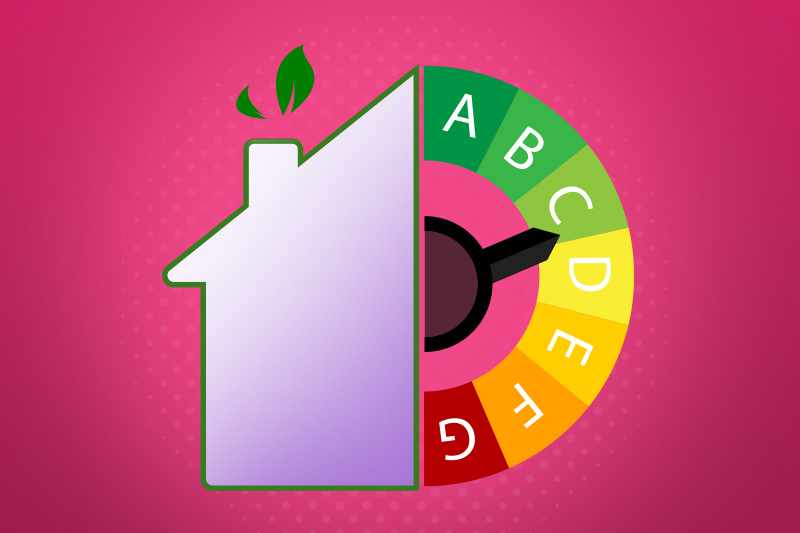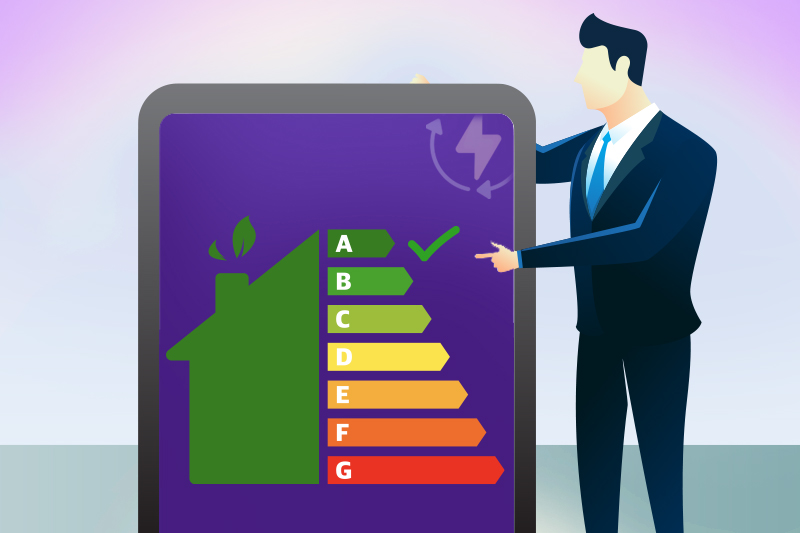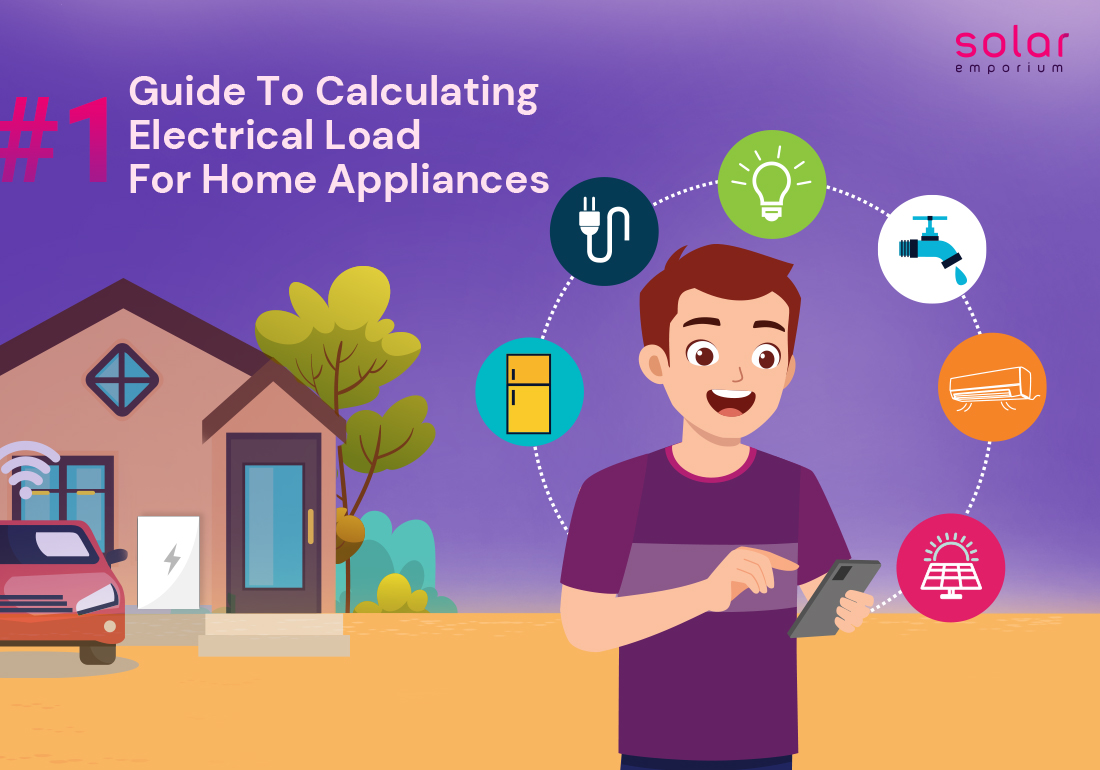Calculating the electrical load for home appliances is essential to ensure that your electrical system can safely and efficiently meet the demands of your household.
Electrical codes and regulations may change over time, so it’s essential to consult with a qualified electrician and refer to the most recent Australian standards.
Calculating the electrical load for home appliances in Australia involves a systematic approach to determine your daily and peak-hour energy consumption. So, how are we calculating electrical load for home appliances?
Let’s first understand what load calculation is.
What is Load Calculation?
Electric loading is the term used to describe a device that draws electrical energy. An electrical load utilises electrical power. It is typically in the form of current and converts it into various conditions such as heat, light, or mechanical work.
Load calculation determines the total electrical power requirements that a building, flat, facility, or electrical circuit demands. It is a critical step in designing, sizing, and managing electrical systems to ensure safety, efficiency, and reliability.
A load calculation considers all the electrical appliances, devices, and equipment connected to the electrical system. The process can determine the necessary capacity, wire size, circuit breakers, and other components.
How to Calculate Electrical Load for Home Appliances?
Here are the steps to calculate electrical loads for home appliances in Australia:
List Your Appliances: List all your home’s electrical appliances and devices that are part of the electrical load. Include everything from lighting and kitchen appliances to entertainment systems and heating/cooling equipment.
Determine the Power Rating: Find the power rating of each appliance in watts (W) or kilowatts (kW). You can find this information on a label or nameplate attached to the appliance.
Some appliances might state The power rating in amps (A) and volts (V). You can use the load calculation formula, Power (W) = Voltage (V) × Current (A). It will convert the information to watts.
Determining Load Types: Electrical loads can differ based on their characteristics. The primary load types include:
- Continuous Loads: These loads operate for three or more hours at total load capacity. Examples include lighting and heat pump systems.
- Non-Continuous Loads: These loads operate for less than three hours at total capacity. Many appliances fall into this category.
- Motor Loads: Electric motors like refrigerators or HVAC systems have unique starting and running load characteristics.

Consider Duty Cycle: Not all appliances run continuously. Estimate the average daily usage or duty cycle for each appliance.
Calculate Daily Energy Consumption: To calculate the daily energy consumption of each appliance. Multiply its power rating by its average daily usage. It will give you each appliance’s daily energy consumption in watt-hours (Wh).
Daily Energy Consumption (Wh) = Power Rating (W) × Average Daily Usage (hours)
Sum Up the Loads: Add up all appliances’ daily energy consumption values to determine the total daily electrical load in watt-hours (Wh). Remember to include fixed and portable appliances.
Most electricity bills in Australia are calculated in kilowatt-hours (kWh). To convert your total daily load from watt-hours to kilowatt-hours, divide by 1,000 (since 1 kWh = 1,000 Wh).
Total Daily Load (kWh) = Total Daily Load (Wh) / 1,000
Peak Loads: Consider peak loads besides the average daily load. These occur when several appliances operate simultaneously. Ensure that your electrical system can handle these surges in demand.
Considering Power Factor: The power factor measures how effectively electrical power is converted into sound work output.
It is essential to consider power factors when calculating loads, especially in commercial and industrial applications, as it affects equipment sizing like transformers and generators.
Voltage Drop: Voltage drop is a concern for long-distance electrical circuits. Load calculations should account for voltage drop to ensure that the voltage supplied to the loads remains within acceptable limits.
Sizing Components: The size of various electrical components is determined based on the calculated load. It includes selecting the appropriate wire size, circuit breakers, transformers, and other protective devices to safely and efficiently carry the load.
Safety Margin: Adding a safety margin to your calculated load is advisable. This extra capacity can accommodate unforeseen power usage increases or future electrical system additions.
Consult a Qualified Electrician: Consulting a qualified electrician is a must. A licensed electrician can ensure your electrical system can handle the calculated load. They will consider factors like voltage drop, circuit capacity, and the size of your electrical service panel.
Codes and Regulations: Always follow the latest Australian electrical codes and regulations, which may change over time. Your electrician will be knowledgeable about these standards and can help ensure your system is compliant.
Documentation: All load calculations should be well-documented for future reference and use by electricians, engineers, and inspectors during the installation and maintenance of the electrical system.
Proper load calculation helps prevent electrical overloads, voltage issues, and potential hazards, making it a fundamental practice in electrical engineering and construction.
But how to calculate a house’s electrical load? Let’s not fall into confusion over terminologies. In this context, calculating a house’s electrical load is the same as calculating electrical load for home appliances.
How To Increase Load Capacity?

Upgrade Electrical Service
If your home or facility consistently operates near the maximum load capacity of your current electrical service, consider upgrading the service.
This involves increasing the leading service panel’s amperage and the utility’s incoming electrical supply. This task should only be performed by licensed professionals. As it often involves significant changes to the electrical infrastructure.
Replace or Upgrade Wiring
Install Additional Circuits
Upgrade Circuit Breakers
Energy Efficiency Measures
Utility And Professional Consultation
You should consult your local utility company if your load requirements are significant. They may need to upgrade the transformer or lines coming to your property to accommodate higher loads.
Always consult a professional electrician when considering your electrical system’s load capacity changes. Electrical work can be dangerous, and incorrect modifications can lead to many hazards and damage to appliances and electronics.
What Is The Average Power Rating Of Home Appliances?

However, power ratings vary depending on the appliance’s brand, model, and efficiency. Additionally, energy efficiency standards and labels are used in Australia to encourage the use of more energy-efficient appliances.
Refrigerator: Average: 100-800 W (varies with size and efficiency)
Microwave Oven: Average: 600-1,200 W
Oven: Average: 2,000-5,000 W. Electric ovens mostly have higher power ratings than gas ovens.
Cook top or Stove: Average: 1,200-3,500 W per burner
Dishwasher: Average: 1,200-1,800 W. Some energy-efficient models may have lower power ratings.
Washing Machine: Average: 300-500 W for standard models
Clothes Dryer: Average: 3,000-5,000 W. Electric dryers have higher power ratings than gas dryers.
Air Conditioner: Average: 1,000-5,000 W. For window units. Central air conditioning systems can vary widely in power requirements.
Water Heater: Average: 3,000-6,000 W. Tankless water heaters may have higher power ratings during use.
Television: Average: 50-400 W
Computer: Average: 100-800 W. Energy-efficient desktop computers use less power.
Lighting: Varies widely depending on the number and type of bulbs. LED bulbs are highly energy-efficient and typically use 5-20 W, while incandescent bulbs can use 60-100 W or more.
Ceiling Fans: Average: 10-100 W. When the lights are on, ceiling fans with lights may have higher power ratings.
The actual power consumption of appliances can vary based on their specific features and usage patterns. Energy-efficient models, labelled with star ratings, are widely available in Australia.
These can help reduce electricity consumption and lower energy bills. To find the precise power rating of a particular appliance, refer to the manufacturer’s documentation or check the label on the appliance itself. It should provide detailed information about its power consumption.

